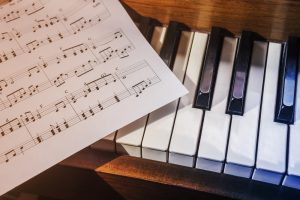Table of Contents
Come join us now, and enjoy playing your beloved music and browse through great scores of every level and styles!
Can’t find the songbook you’re looking for? Please, email us at: sheetmusiclibrarypdf@gmail.com We’d like to help you!
Sorabji: In the Hothouse (from Two Piano Pieces) sheet music, Noten, partitura, spartiti 楽譜

Best Sheet Music download from our Library.
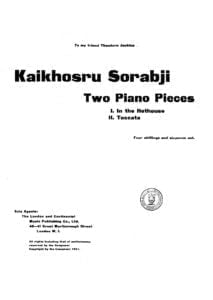
Please, subscribe to our Library.
If you are already a subscriber, please, check our NEW SCORES’ page every month for new sheet music. THANK YOU!
Browse in the Library:
Or browse in the categories menus & download the Library Catalog PDF:
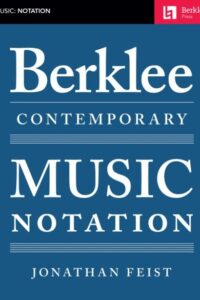
Who was Sorabji?
Kaikhosru Shapurji Sorabji: The Hermit of Modernist Maximalism
In the often-crowded pantheon of 20th-century composers, Kaikhosru Shapurji Sorabji (1892-1988) occupies a unique and enigmatic niche. A composer of staggering ambition, labyrinthine complexity, and self-imposed isolation, Sorabji crafted some of the most monumental, technically demanding, and stylistically idiosyncratic music ever conceived. His work, largely ignored during his lifetime and still challenging audiences today, represents a singular path through modernism – one defined by maximalism, intricate ornamentation, transcendental virtuosity, and a fierce, almost hermetic, independence.

Biography: A Self-Forged Identity
- Birth & Heritage: Born Leon Dudley Sorabji on August 14, 1892, in Chingford, Essex, England. His father was a Parsi engineer from India (thus the Persian-derived name Sorabji), and his mother was English-Spanish. This mixed heritage profoundly shaped his sense of identity, though he felt alienated from both cultures.
- The Name: Around 1914, he legally changed his name to Kaikhosru Shapurji Sorabji. “Kaikhosru” and “Shapurji” were Persian names chosen for their resonance and connection to ancient Persian history and Zoroastrianism, reflecting his deliberate construction of a unique persona.
- Musical Formation: Largely self-taught. He received some piano lessons in his youth but had no formal composition training. His musical education came through voracious listening, score study (especially Bach, Liszt, Busoni, Debussy, Ravel, Scriabin, Szymanowski, Medtner), and wide reading in literature, philosophy, and the occult.
- Early Career & Criticism: Worked as a music critic (under the pseudonym “S. Godfrey”) for outlets like The New Age and The New English Weekly from the 1910s to the 1930s. His critiques were famously acerbic, insightful, and often scathing, particularly targeting English musical provincialism and composers he deemed mediocre (which was most of them).
- The Recluse: Deeply disillusioned by the musical establishment and critical reception to his early performances (which were rare and often controversial), Sorabji gradually withdrew from public musical life starting in the late 1930s. After his mother’s death in 1940, he retreated almost completely to his secluded home “The Eye” in Corfe Castle, Dorset, where he lived with his companion, Reginald Norman Best, until his death. He forbade performances of his music for decades.
- The Ban Lifted: In 1976, pressured by a growing underground interest spearheaded by pianists like Yonty Solomon and Alistair Hinton (who later became his literary executor), Sorabji reluctantly lifted the ban on performances, provided he approved the performer.
- Death: Sorabji died on October 15, 1988, in Winfrith Newburgh, Dorset, leaving behind a colossal legacy of unpublished manuscripts.
Works: Monuments of Sound

Sorabji’s output is vast and overwhelmingly dominated by solo piano music, though he also composed orchestral works, chamber music, organ symphonies, and songs. His works are renowned for their extreme length, density, and technical difficulty, pushing the boundaries of playability.
- Key Masterpieces:
- Opus Clavicembalisticum (1930): His most famous (or infamous) work. A colossal 4+ hour piano epic in 12 movements (including fugues, passacaglias, toccatas, cadenzas), often considered one of the most challenging solo piano works ever written. A summit of contrapuntal complexity and virtuosic display.
- Symphonic Variations for Piano (1935-37): Another monumental work, exploring vast variation forms over an extended duration.
- Sequentia Cyclica super “Dies iræ” ex Missa pro Defunctis (1948-49): A massive cycle of 27 variations on the “Dies Irae” chant, demonstrating his intricate contrapuntal and transformative skills.
- 100 Transcendental Studies (1940-44): True to their name, these studies explore extreme technical and expressive demands far beyond those of Liszt or Chopin.
- Symphonies for Solo Piano: Several exist, including his Symphony No. 2 (“Jāmī”), blending orchestral textures and scope onto the piano.
- Gulistān – Nocturne for Piano (1940): A prime example of his lush, perfumed, and incredibly intricate “Persian”-inspired style.
- Concerti: He wrote several for solo piano and orchestra (e.g., Concerto per suonare da me solo e senza orchestra, per divertirsi), which are symphonic in scale and require superhuman virtuosity.
- Symphonies for Organ: Vast, complex works exploring the sonic possibilities of the instrument.
Analysis of Style: A Universe of Complexity
Sorabji’s style is instantly recognizable yet difficult to categorize. It synthesizes diverse elements into a unique and overwhelming whole:
- Maximalism: This is the defining characteristic. Sorabji embraced extremes:
- Length: Works lasting several hours are common.
- Density: Highly polyphonic textures, often with multiple independent melodic lines woven together in complex counterpoint (influenced by Bach, Busoni).
- Virtuosity: Demands transcendental technique – cascades of notes, complex polyrhythms, wide leaps, immense power, and extreme delicacy. He wrote as if the pianist had four hands.
- Ornamentation: Baroque-like ornamentation (trills, mordents, turns, grace notes) is ubiquitous, often layered and integral to the texture, creating shimmering, kaleidoscopic surfaces (influenced by Scriabin, Szymanowski, Middle Eastern/Persian music).
- Dynamic Range: From barely audible whispers to thunderous, percussive climaxes.
- Harmony: A complex fusion:
- Rooted in late-Romantic chromaticism (Scriabin, Szymanowski, early Schoenberg).
- Freely employed dissonance, clusters, and intricate chord structures.
- Often retained a sense of tonal centers or polarity, even amidst dense chromaticism (unlike strict atonality).
- Incorporated modal inflections, sometimes evoking Persian or Spanish flavors.
- Rhythm: Highly complex and fluid:
- Frequent use of polyrhythms (multiple simultaneous rhythms), cross-rhythms, and nested tuplets (triplets within quintuplets, etc.).
- Tempo often fluctuates wildly, requiring immense control.
- A sense of improvisatory freedom within highly structured forms.
- Form: Often large-scale, complex, and idiosyncratic:
- Favored variations (passacaglias, chaconnes), fugues, toccatas, and intricate multi-movement structures (like the Opus Clavicembalisticum).
- Forms were often expansive and cumulative, building through layered repetition and intensification rather than traditional development.
- Architecture was paramount, even in the densest textures.
- Influences (Assimilated, Not Imitated):
- Ferruccio Busoni: The most profound influence. Busoni’s ideas of “Young Classicism,” the transcendental potential of the piano, the fusion of Bachian counterpoint with modern harmony, and the concept of “Junge Klassizität” resonated deeply. Sorabji dedicated his Opus Clavicembalisticum to Busoni’s memory.
- Franz Liszt: Virtuosity, thematic transformation, large-scale forms, and the symphonic poem concept translated to piano.
- J.S. Bach: Contrapuntal mastery, structural rigor, and the use of forms like fugue and passacaglia.
- Alexander Scriabin: Mysticism, harmonic language, dense textures, and ecstatic climaxes.
- Karol Szymanowski: Sensuous harmony, intricate ornamentation (especially in the “Persian” inspired works like Métopes and Masques), and voluptuous textures.
- Debussy & Ravel: Color, texture, exoticism, and pianistic refinement.
- Mediterranean & Persian Cultures: While not authentically recreating these styles, he evoked their essence through ornamentation, melodic turns, and titles (Gulistān, Jāmī), reflecting his fascination with his Persian heritage and the wider Orient.
- Aesthetic: Sorabji’s music aimed for:
- Transcendence: Pushing beyond perceived limits of instrument, performer, and listener.
- Luxuriance & Opulence: A rich, sensual, almost decadent sound world.
- Intellectual Rigor: Underlying the sensual surface was meticulous structural planning.
- Individualism: A complete rejection of prevailing trends (serialism, neoclassicism, minimalism) in favor of his own uncompromising vision.
Legacy: From Obscurity to Cult Status
Sorabji’s legacy is complex and evolving:
- Decades of Neglect: His self-imposed exile and performance ban meant his music was virtually unknown outside a tiny circle for nearly 40 years. Manuscripts were inaccessible, unplayable, and unpublished.
- The Pioneers (1970s-): The lifting of the ban sparked interest. Pianists like Yonty Solomon, Michael Habermann, Geoffrey Douglas Madge (who made the first complete recording of Opus Clavicembalisticum in 1977), and later Marc-André Hamelin, Jonathan Powell, Fredrik Ullén, and Ronald Stevenson began the monumental task of learning, performing, and recording his works. This required immense dedication and technical prowess.
- Publication & Scholarship: The Sorabji Archive, established by Alistair Hinton (Sorabji’s literary executor), has been crucial in cataloging, editing, and facilitating the publication of scores (primarily by Dover Publications and The Sorabji Music Archive). Scholarly work is gradually increasing.
- Recordings Renaissance: The CD era and digital distribution (YouTube, streaming) have been transformative. Dedicated labels (Altarus, BIS, Toccata Classics, Piano Classics) have released numerous recordings, making this once-inaccessible music available globally. Complete cycles of the 100 Studies and other major works are underway.
- The Cult & The Challenge: Sorabji remains a “composer’s composer” and a cult figure. His music is not mainstream concert fare due to its extreme demands and duration. However, it commands deep respect and fascination among pianists, composers, and listeners drawn to its unique sound world and uncompromising vision. He is seen as the ultimate iconoclast, forging a path utterly independent of 20th-century musical fashions.
- Influence: His direct influence on other composers is hard to pinpoint due to his obscurity, but he stands as a powerful symbol of uncompromising artistic integrity and the exploration of extreme complexity and virtuosity. Composers interested in maximalism, intricate counterpoint, or pushing pianistic limits inevitably encounter his shadow.
- Copyright Controversy: The complex copyright status of his works (involving the Sorabji Archive and publishers) has sometimes been a point of friction within the community of performers and scholars seeking access.
Sorabji: The Solitary Giant
Kaikhosru Shapurji Sorabji was a true original. He inhabited a musical universe entirely of his own making, synthesizing diverse influences into a style characterized by unparalleled complexity, sensuous opulence, and transcendental ambition. His deliberate withdrawal from the world ensured decades of obscurity, but the dedication of pioneering performers and the power of recording technology have brought his extraordinary soundscapes to light. While his music remains challenging and demanding, it offers unparalleled rewards: a journey into a world of labyrinthine beauty, overwhelming power, and intellectual fascination. Sorabji stands as a testament to the power of an utterly individual artistic vision, uncompromising in its scope and ambition, a solitary giant whose monumental creations continue to challenge and inspire. He redefined the possible for the piano and left a legacy that continues to unfold as more performers dare to scale his musical Himalayas.
“In the Hothouse” is one of Sorabji’s most evocative and frequently performed works, serving as a perfect entry point into his dense, sensuous sound world. Here’s a detailed look at this fascinating piece:
Context: Two Piano Pieces (1918)
- Composed: 1918 (early in Sorabji’s career, age 26).
- Publication: First published in 1920, making it one of the earliest Sorabji works available in print.
- The Pair: “In the Hothouse” is paired with “Toccata” – a contrasting, hyper-virtuosic, and structurally complex piece showing his Busoni/Liszt influences. “In the Hothouse” offers the sensual, atmospheric counterpoint.
- Significance: Represents Sorabji’s early mastery of texture, harmony, and evocative atmosphere. It predates his gargantuan works but already displays his unique voice.
“In the Hothouse”: A Sensory Immersion
- Title & Imagery: The title instantly conjures an environment: humid, lush, teeming with exotic, overripe plant life, heavy perfumes, and stifling, enclosed heat. Sorabji translates this sensory overload into sound.
- Form & Structure: Relatively free and rhapsodic. It unfolds as a continuous, organic stream of consciousness rather than adhering to strict classical forms. Think of it as an elaborate, decadent arabesque.
- Style & Character:
- Extreme Sensuality: This is the defining feature. The music drips with lush, complex harmonies and suffocatingly rich textures.
- Harmony: Deeply chromatic, rooted in late Scriabin and early Szymanowski. Expect dense, constantly shifting chords: augmented harmonies, whole-tone inflections, unresolved dissonances creating tension, and sudden moments of surprising consonance like shafts of light piercing foliage. It avoids traditional tonality but gravitates around implied centers.
- Texture: Thick, layered, and constantly in motion. Tremolos, trills, rapid filigree (ornamental passages), and cascading arpeggios create a shimmering, humid haze. Melodies are often embedded within this dense undergrowth rather than standing clearly apart. The writing often requires the pianist to sustain multiple layers simultaneously.
- Rhythm: Fluid and flexible, often obscured by the sheer density of notes and ornamentation. Rubato (expressive tempo fluctuations) is essential. While less overtly complex polyrhythmically than his later works, the rhythmic flow feels organic and improvisatory.
- Dynamics & Articulation: Wide dynamic range, often shifting suddenly between extremes (e.g., thunderous climaxes collapsing into fragile whispers). Articulation varies from sharp staccatos to legatissimo passages that blur together. Pedaling is crucial for sustaining the harmonic haze and creating resonance.
- Ornamentation: Quintessential early Sorabji. Trills, mordents, turns, and grace notes are not mere decoration; they are the texture, creating constant flickering movement and contributing to the claustrophobic, teeming atmosphere. This foreshadows the intricate ornamentation dominating his mature style.
- Emotional Landscape: Evokes opulence, decadence, languor, mystery, stifling heat, hidden dangers, and overwhelming sensory stimulation. There’s a sense of beauty bordering on the grotesque due to its sheer intensity.
Influences Audible in “In the Hothouse”
- Scriabin (Primary): The harmonic language (mystic chords, unresolved dissonance, ecstatic climaxes), the sensual atmosphere, and the use of trills/tremolos are deeply indebted to Scriabin’s late sonatas and poems (e.g., Vers la flamme). Sorabji pushes Scriabin’s decadence further.
- Szymanowski: The opulent textures, perfumed harmonies, and “orientalist” exoticism (though abstracted here) strongly recall Szymanowski’s “Métopes” or “Masques,” which Sorabji admired deeply.
- Debussy: The focus on atmosphere, texture, and harmonic color (whole-tone scales, parallel chords) shows Debussy’s influence, though rendered with far greater density and intensity.
- Ravel: The virtuosic filigree and lush harmonies (think “Gaspard de la Nuit,” especially “Ondine” or “Le gibet”) are a touchstone, again amplified.
- Liszt: The rhapsodic freedom and dramatic gestures hint at Liszt, though filtered through a post-Scriabinesque lens.
Performance Challenges
- Texture & Balance: Maintaining clarity amidst the dense, rapidly shifting textures is paramount. The pianist must carefully voice chords and layers to prevent muddiness while sustaining the essential harmonic haze.
- Ornamentation as Texture: Executing the constant ornamentation smoothly and evenly, integrating it into the melodic and harmonic flow rather than treating it as mere decoration.
- Dynamic Control: Navigating the extreme dynamic contrasts and sudden shifts without sounding jarring. Creating a true pianissimo shimmer within complexity is incredibly difficult.
- Rubato & Phrasing: Applying expressive tempo fluctuations naturally while maintaining the overall structural coherence and forward momentum of the rhapsodic form.
- Pedaling: Using the pedal to create resonance and blend without causing harmonic blurring or loss of rhythmic definition. Requires exceptional sensitivity.
- Stamina & Focus: While shorter than his later works (typically 12-15 minutes), the piece demands intense concentration and physical control to sustain the atmosphere and navigate the technical intricacies.
Legacy & Significance of “In the Hothouse”
- Accessibility: It remains one of Sorabji’s most “accessible” works due to its evocative title, relatively shorter duration, and concentrated expression. It’s a frequent choice for pianists introducing audiences to Sorabji.
- Blueprint: It serves as a crucial blueprint for Sorabji’s mature style, showcasing his core preoccupations: sensuality, harmonic density, intricate ornamentation as texture, and atmospheric evocation, all present in embryonic form.
- Performance History: Despite Sorabji’s later ban, “In the Hothouse” (along with the Toccata) was one of the few pieces occasionally performed during his lifetime (e.g., by Sorabji himself and pianist Reginald Paul) and became a key work for the pioneering generation post-1976 (Yonty Solomon, Michael Habermann, Marc-André Hamelin, Jonathan Powell, Fredrik Ullén).
- Gateway Piece: It functions as a vital “gateway drug” into Sorabji’s world. Its success in conveying its intense atmosphere often encourages listeners to explore his more monumental, complex works.
- Standalone Masterpiece: Regardless of its role as an introduction, it stands as a perfectly formed and powerful piece of early modernist piano writing, a miniature tone poem of extraordinary evocative power.
“In the Hothouse” is a sun-drenched, overripe, and intoxicating immersion into Sorabji’s unique aesthetic. It captures the essence of his sensual maximalism in a concentrated dose, showcasing his debt to Scriabin and Szymanowski while asserting his own distinct voice. Its evocative power, technical brilliance, and relative brevity ensure its enduring place as one of his most beloved and frequently performed works, offering a compelling glimpse into the hothouse of Sorabji’s extraordinary musical imagination.
| Artist or Composer / Score name | Cover | List of Contents |
|---|---|---|
| Chaplin Songbook The Songs of Charlie Chaplin |
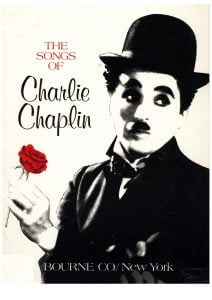 |
Chaplin The Songs of Charlie Chaplin |
| Chaplin, Charlie – My Autobiography (Book) |
 |
|
| Chaplin, Charlie Smile (piano and voice with lyrics) | Charlie Chaplin – Smile (piano and voice with lyrics) | |
| Charles A Zimmerman – Anchors Aweight | ||
| Charles Aznavour Livre D’or No. 2 |
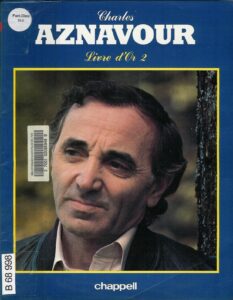 |
Charles Aznavour Livre D’or No. 2 |
| Charles Aznavour Livre D’or No. 4 |
 |
Charles Aznavour Livre D’or No. 4 |
| Charles Aznavour – La Bohème Piano Solo arr. |
 |
|
| Charles Aznavour – La Boheme (Guitar arr. sheet music with TABs) | Charles Aznavour – La Boheme (Guitar arr. sheet music with TABs) | |
| Charles Aznavour – Paroles et Musique avec Accompagnement piano |
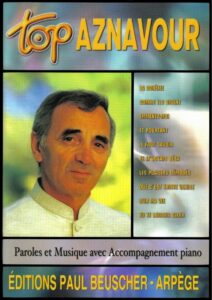 |
Charles Aznavour |
| Charles Aznavour – She – by Herbert Kretzmer (Piano Solo) | Charles Aznavour – She – by Herbert Kretzmer (Piano Solo) | |
| Charles Aznavour – Une Vie D’amour – Piano Solo |
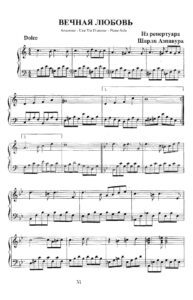 |
|
| Charles Aznavour Garvarec Une Vie D’amour from the film Teheran-43 Piano |
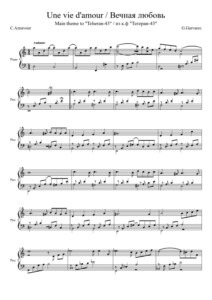 |
|
| Charles Aznavour- La Bohème (Musescore File).mscz | ||
| Charles Aznavour, Charles – Emmenez-Moi |
 |
|
| Charles Colin- Develop Sight Reading |
 |
Charles Colin- Develop Sight Reading |
| Charles Fox – Killing Me Softly With His Song | ||
| Charles Fox – Killing me softly with his song Guitar Solo | Charles Fox – Killing me softly with his song | |
| Charles Fox Killing Me Softly by Dietmar Steinhauer |
 |
|
| Charles Mingus – More Than A Play-Along, 14 Original Tunes (Bb Instruments) |
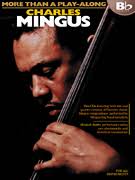 |
Charles Mingus – More Than A Play-Along, 14 Original Tunes (Bb Instruments) |
| Charles Mingus Easy Piano Solos |
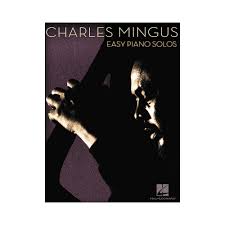 |
Charles Mingus Easy Piano Solos |
| Charles Mingus I Know What I Know The Music Of (Book) |
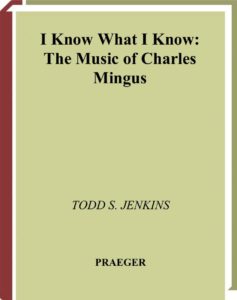 |
|
| Charles Mingus More Than A Fake Book |
 |
charles mingus fake book |
| Charles Mingus, the life and music of – Myself When I Am Real (by Gene Santoro) Book |
 |
|
| Charles Trenet – Grands Interprètes |
 |
Charles Trenet – Grands Interpretes |
| Charles Trenet – La Mer (Beyond The Sea) Piano Vocal |
 |
|
| Charles Trenet 41 Chansons Piano Vocal Paroles |
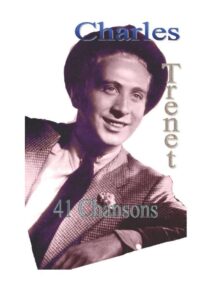 |
Charles Trenet 41 Chansons Piano Vocal Paroles |
| Charles Trenet Boum Piano Vocal |
 |
|
| Charles Trenet En Avril A Paris (April In Paris) Arr. By A. Weissenberg |
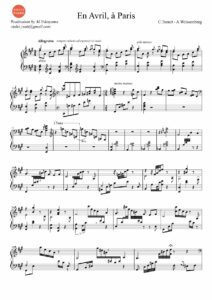 |
|
| Charles Trenet En Avril A Paris Piano Vocal Guitar Chrods Vintage Sheet Music |
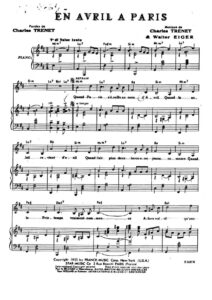 |
|
| Charles Trenet La Mer Easy Piano |
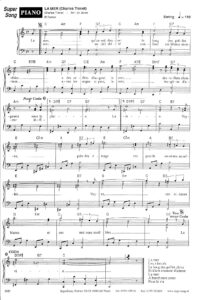 |
|
| Charles Trenet Songbook |
 |
Charles Trenet Songbook 1950 |
| Charlie And The Chocolate Factory – Verucasalt – Danny Elfman | ||
| Charlie And The Chocolate Factory Danny Elfman |
 |
Charlie And The Chocolate Factory Danny Elfman |
| Charlie Brown Favorites 15 Selections Arranged By Phillip Keveren Piano Solo |
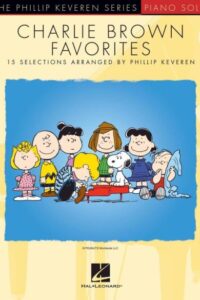 |
Charlie Brown Favorites 15 Selections Arranged By Phillip Keveren Piano Solo |
| Charlie Brown Songbook |
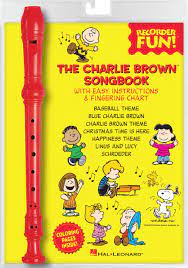 |
 |
| Charlie Chaplin – Smile (Musescore File).mscz | ||
| Charlie Chaplin Modern Times for violin and piano arr. by Claus Ogermann of Smile (Theme) | Charlie Chaplin Modern Times for violin and piano arr. by Claus Ogermann of Smile (Theme) | |
| Charlie Christian Guitar Method |
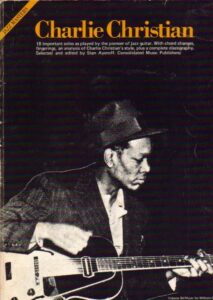 |
|
| Charlie Christian How To Play Jazz Guitar In The Style Of Charlie Christian |
 |
|
| Charlie Christian The Charlie Christian Method Jazz Guitar Improvisation with TAB |
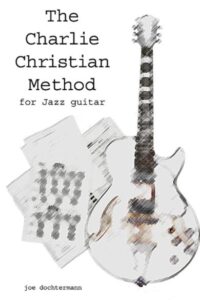 |
|
| Charlie Christian The Definitive Collection Guitar TAB |
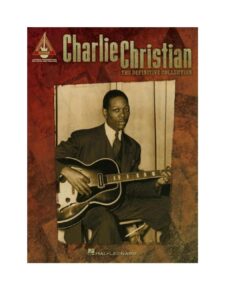 |
Charlie Christian The Definitive Collection Guitar TAB |
| Charlie Haden Silence |
 |
|
| Charlie Parker – In Session With Charlie Parker |
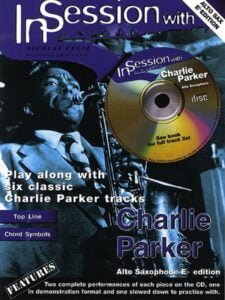 |
Charlie Parker – In Session With Charlie Parker |
| Charlie Parker – Yardbird Suite (arr. for piano) | Charlie Parker – Yardbird Suite (arr. for piano) | |
| Charlie Parker Ballade Transcription Alto Sax |
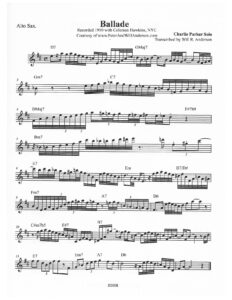 |
|
| Charlie Parker Collection Alto Saxophone |
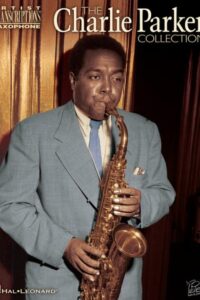 |
Charlie Parker Collection Alto Saxophone |
| Charlie Parker Essential Jazz Lines for Guitar |
 |
Charlie Parker Essential Jazz Lines for Guitar |
| Charlie Parker For Guitar Note For Note Transcriptions And Detailed Performance Notes For 18 Bebop Classics with TAB |
 |
Charlie Parker For Guitar Note For Note Transcriptions And Detailed Performance Notes For 18 Bebop Classics |
| Charlie Parker For Piano |
 |
Charlie Parker For Piano |
| Charlie Parker Jazz Masters 14 solos for all C instruments |
 |
Charlie Parker Jazz Masters 14 solos for all C instruments |
| Charlie Parker Omnibook For C Instruments |
 |
Charlie Parker Omnibook For C Instruments |
| Charlie Parker Omnibook For Eb E Flat Instruments Transcribed exactly from his recorded solos |
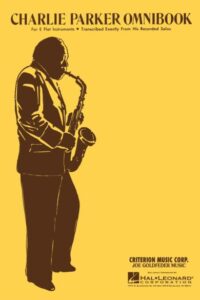 |
Charlie Parker Omnibook For E Flat Instruments |
| Charlie Parker Omnibook Transposed for Bb B Flat instruments Transcribed exactly from his recorded solos |
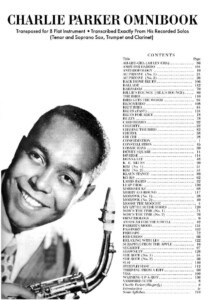 |
Charlie Parker Omnibook Transposed for B Flat instruments Transcribed exactly from his recorded solos |
| Charlie Parker Omnibook Volume 2 For Bb B Flat Instruments |
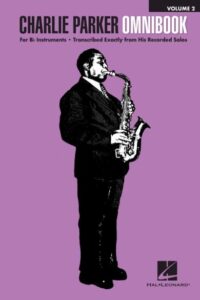 |
Charlie Parker Omnibook Volume 2 For B Flat Instruments |
| Charlie Parker Omnibook Volume 2 For C instruments Transcribed exactly from his recorded solos |
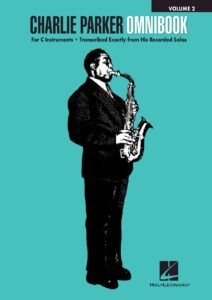 |
Charlie Parker Omnibook Volume 2 For C instruments Transcribed exactly from his recorded solos |
| Charlie Parker Omnibook Volume 2 For Eb E Flat Instruments |
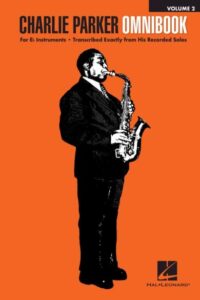 |
Charlie Parker Omnibook For E Flat Instruments |
| Charlie Parker The Life And Music Of Charlie Parker bird by Chuck Haddix (Book) Biography |
 |
|
| Charlie Parker What Is This Thing Called Love Eb transcription |
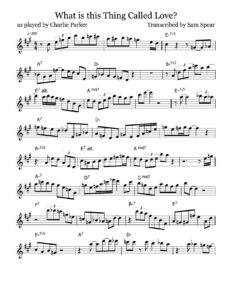 |
|
| Charlie Puth – Attention Piano and Lyrics Sheet Music |
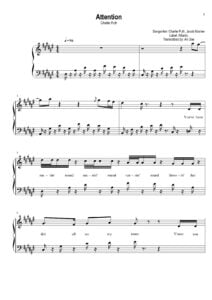 |
|
| Charlie Puth – Attention Piano Solo Sheet Music |
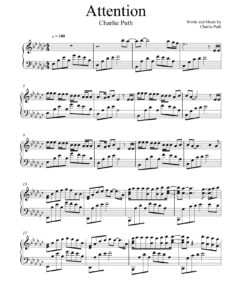 |
|
| Charlie Rich – The Most Beautiful Girl | ||
| Charly García Eiti Leda Serú Girán Piano Voice |
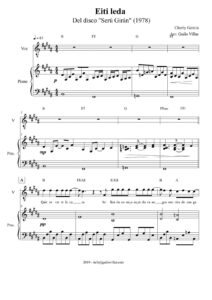 |
|
| Charly Garcia Para Piano |
 |
Charly Garcia Para Piano |
| Charly García transcriptiones para piano (Sui Generis, La Máquina, Serú Girám, Charly Solista) |
 |
|
| Charms (W.E. soundtrack) Abel Korzeniowski | ||
| Chart Hits Of 2014 2015 Piano Vocal Guitar |
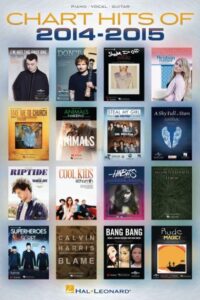 |
Chart Hits Of 2014 2015 Piano Vocal Guitar |
| Chart Hits Of 2015 2016 Piano Vocal Guitar |
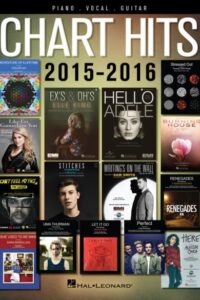 |
Chart Hits Of 2015 2016 Piano Vocal Guitar |
| Chart Hits Of 2016 2017 Piano Vocal Guitar |
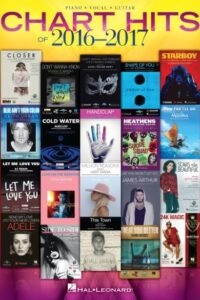 |
Chart Hits Of 2016 2017 Piano Vocal Guitar |
| Chart Hits Of 2017 2018 Piano Vocal Guitar |
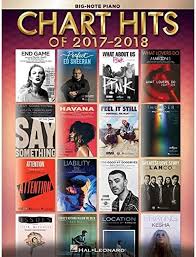 |
Chart Hits Of 2017 2018 Piano Vocal Guitar |
| Chart Hits Of 2018 2019 Easy Piano |
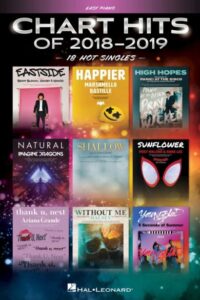 |
Chart Hits Of 2018 2019 Easy Piano |
| Chart Hits Of 2019 2020 18 Top Singles Easy Piano |
 |
Chart Hits Of 2018 2019 Easy Piano |
| Chart Hits Of 2020 2021 20 Top Singles |
 |
Chart Hits Of 2020 2021 20 Top Singles |
| Chart Hits Of 2021 2022 Piano Vocal Guitar |
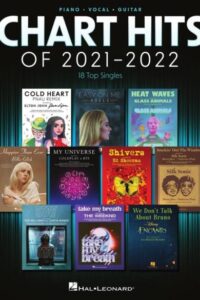 |
Chart Hits Of 2021 2022 Piano Vocal Guitar |
| Cher – Believe | ||
| Cher – If I Could Turn Back Time | ||
| Cher – Strong Enough | ||
| Cher Greatest Hits So far Songbook |
 |
Cher Greatest Hits So far Songbook |
| Chere Amie (Marc Lavoine & Francoise Hardy) | ||
| Chet Atkins The Streets Of Laredo (Guitar) Traditional |
 |
|
| Chet Atkins Vintage Classics – Pickin Like Chet (Pat Kirtley) Guitar (with Tablature) |
 |
|
| Chet Atkins – Birth Of The Blues (Guitar arr. sheet music with TABs) | Chet Atkins – Birth Of The Blues (Guitar arr. sheet music with TABs) | |
| Chet Atkins – Blowin In The Wind by Bob Dylan (Guitar arr. sheet music with TABs) | Chet Atkins – Blowin In The Wind by Bob Dylan (Guitar arr. sheet music with TABs) | |
| Chet Atkins – Cheek To Cheek Jazz Standard (Guitar arr. sheet music with TABs) | Chet Atkins – Cheek To Cheek Jazz Standard (Guitar arr. sheet music with TABs) | |
| Chet Atkins – La Vie en Rose Guitar Tablature TABs |
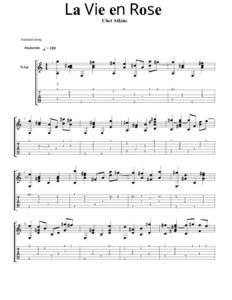 |
|
| Chet Atkins – Mr. Sandman Guitar Tablature TABs |
 |
|
| Chet Atkins – Yesterdays Jazz Standard (Guitar arr. sheet music with TABs) | Chet Atkins – Yesterdays Jazz Standard (Guitar arr. sheet music with TABs) | |
| Chet Atkins Almost Alone Guitar Tab Book |
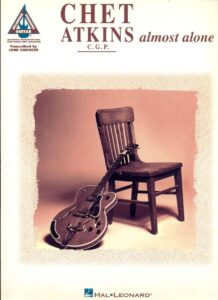 |
Chet Atkins Almost Alone Tab Book |
| Chet Atkins Vintage Fingerstyle – Guitar |
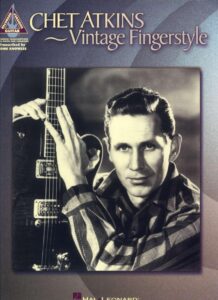 |
Chet Atkins Vintage Guitar Fingerstyle |
| Chet Baker Autumn Leaves Transcription |
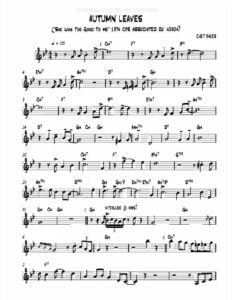 |
|
| Chet Baker But Not For Me By Gershwin (Trumpet Solo) |
 |
|
| Chet Baker – All the Things You Are Solo Transcription Jazz Standard |
 |
|
| Chet Baker Deep In A Dream The Long Night Of Chet Baker By James Gavin (Book Biography) |
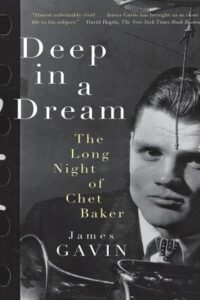 |
|
| Chet Baker II-V-I Licks in 12 Keys Treble and Bass Clef 4 books (Easy, Major And Minor Licks) |
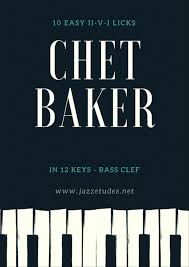 |
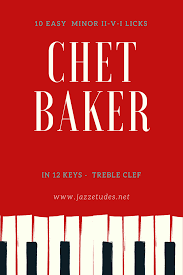 |
| Chet Baker In Milan Transcriptions |
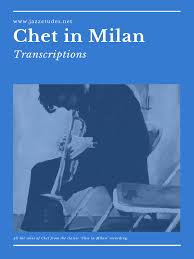 |
Chet Baker In Milan Transcriptions |
| Chet Baker It could happen to you (James Van Heusen) | it could happen to you1 | |
| Chet Baker It could happen to you (solo transcription) | Chet-baker It-could-happen-to-you–solo | |
| Chet Baker Just Friends(Solo transcription) | Chet Baker Solo-transcription-Just-Friends-Chet-Baker | |
| Chet Baker Scat Solos transcriptions by Jim Bastian |
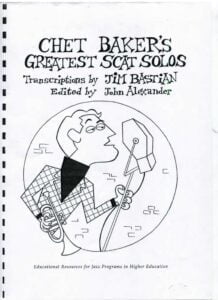 |
Chet Baker Scat Solos transcriptions |
| Chet Baker Solos – transcriptions by Thorsten Wollmann |
 |
Chet Baker solos 1 |
| Chet Baker Solos Vol 2 |
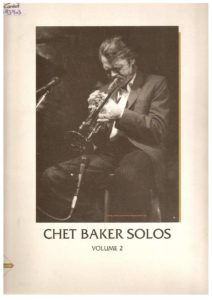 |
Chet Baker solos |
| Chet Baker, Paul Desmond Solos On Concierto De Aranjuez (Joaquin Rodrigo, Jim Hall) Transcription From The Concierto Album |
 |
|
| Chevaliers de Sangreal (Hans Zimmer) | ||
| Chez Chanel (Coco avant Chanel OST) Alexandre Desplat | ||
| Chi mai (Le Professionnel OST) Ennio Morricone | ||
| Chiaraluce (Giorgia) | ||
| Chicago – Colour My World |
 |
|
| Chicago – Best Selection (Band score) |
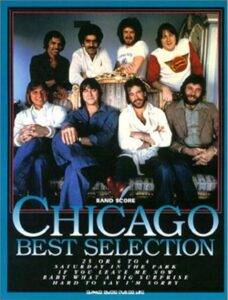 |
Chicago – Best Selection (Band score) |
| Chicago – Colour My World | ||
| Chicago – Hard To Say Im Sorry | ||
| Chicago – I Cant Do It Alone | ||
| Chicago – If You Leave Me Now | ||
| Chicago – You’re The Inspiration |
 |
|
| Chicago (Movie vocal Selections) |
 |
Chicago Movie |
| Chicago Blues Guitar |
 |
Chicago Blues Guitar |
| Chicago Blues Rhythm Guitar Tablature with MP3 audio tracks to play along |
 |
Chicago Blues Rhythm Guitar |
| Chicago The Musical – Music by John Kander |
 |
Chicago The Musical |
| Chicagoland A Intermediate Piano Duets by Robert D Vandall |
 |
Chicagoland A Intermediate Piano Duets by Robert D Vandall |
| Chick Corea 20 Children Songs For Piano Book sheet music |
 |
|
| Chick Corea – 6 Pieces For Solo Guitar transcriptions | Chick Corea – 6 Pieces For Solo Guitar transcriptions | |
| Chick Corea – A Work In Progress …On being a Musician |
 |
|
| Chick Corea – Eternal Child |
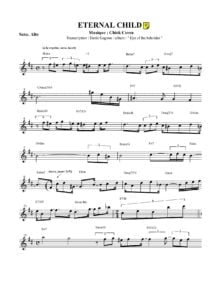 |
|
| Chick Corea – Keyboard Workshop |
 |
Chick Corea Keyboard Workshop |
| Chick Corea – Lifeline |
 |
|
| Chick Corea – Now He Sings, Now He Sobs (album, piano) |
 |
Chick Corea – Now He Sings, Now He Sobs (album, piano)2 |
| Chick Corea – Origin Songs For Piano |
 |
Chick Corea – Origin Songs For Piano |
| Chick Corea – Pastime Paradise (Stevie Wonder) Performed Live At Jazz In Marciac 2015 | Chick Corea – Pastime Paradise (Stevie Wonder) Performed Live At Jazz In Marciac 2015 | |
| Chick Corea – Pastime Paradise (Stevie Wonder) Performed LIVE at Jazz in Marciac 2015.mscz | ||
| Chick Corea – Someone To Watch Over Me (Gershwin) Piano transcription | Chick Corea – Someone To Watch Over Me (Gershwin) Piano transcription | |
| Chick Corea – Spain |
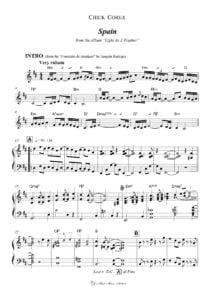 |
|
| Chick Corea – Spain ( Yohan Kim ver.) | Chick Corea – Spain ( Yohan Kim ver.) | Classics to jazz Mozart by Robbins Jonathon |
| Chick Corea – Spain Akoustic Band – Chick’s Solo |
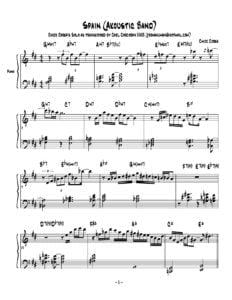 |
|
| Chick Corea – Waltz for Dave |
 |
|
| Chick Corea & Gary Burton Armando’s Rhumba (Live In Burghausen 2011) Transcription | Chick Corea & Gary Burton Armando’s Rhumba (Live In Burghausen 2011) Transcription | |
| Chick Corea Amnesia | Chick Corea Amnesia | |
| Chick Corea And Gary Burton Armando’s Rhumba (Live In Burghausen 2011) Transcription | Chick Corea And Gary Burton Armando’s Rhumba (Live In Burghausen 2011) Transcription | |
| Chick Corea And Return To Forever Musicmagic (Free Transcription For Piano Solo) | Chick Corea And Return To Forever Musicmagic (Free Transcription For Piano Solo) | |
| Chick Corea and Return to Forever – Musicmagic (free transcription for Piano Solo).mscz | ||
| Chick Corea Armando’s Rumba and Blue Miles |
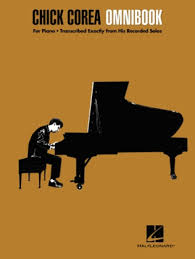 |
Chick Corea Armando’s Rumba and Blue Miles |
| Chick Corea Classics The Jazz Workshop Series Transcriptions and text by Bill Dobbins |
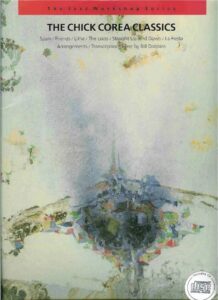 |
Chick Corea Classics The Jazz Workshop Series |
| Chick Corea Collection Songbook |
 |
Chick Corea collection |
| Chick Corea for piano solo vol 1 (originals by Chick Corea) |
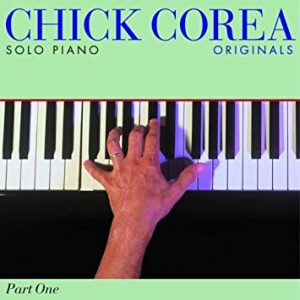 |
chick corea piano solo |
| Chick Corea Got A Match Solo (jazz sheet music transcripton) | Chick Corea Got A Match Solo (jazz sheet music transcripton) | |
| Chick Corea Jazz Improvisation |
 |
Chick Corea Jazz Improvisation |
| Chick Corea Jazz Piano Collection |
 |
Chick Corea Jazz Piano Collection |
| Chick Corea La Fiesta | Chick Corea La Fiesta | |
| Chick Corea Music Poetry |
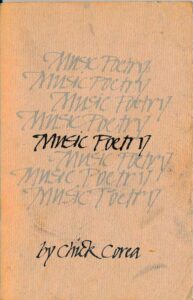 |
|
| Chick Corea No Mystery (piano improvisation) Return To Forever | Chick Corea No Mystery (piano improvisation) Return To Forever | |
| Chick Corea Original Transcriptions Arranged By The Same Composer (Spain And Others) |
 |
Chick Corea Original Transcriptions Arranged By The Same Composer (Spain And Others) |
| Chick Corea Piano Transcriptions |
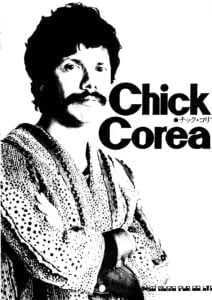 |
Chick Corea Piano Transcriptions |
| Chick Corea Play Along Collection for Bb Instruments |
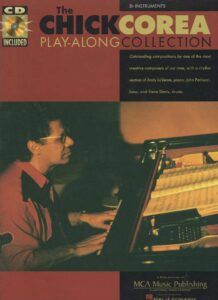 |
Chick Corea Play Along Collection for Bb Instruments |
